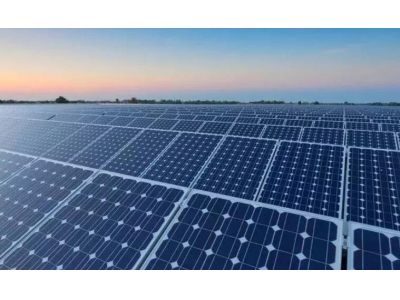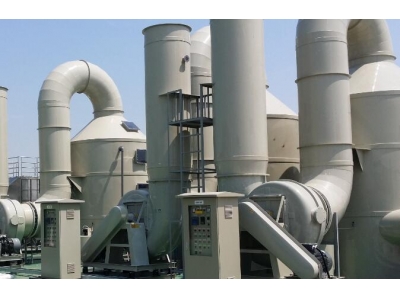一、十三五农村宅基地
十三五农村宅基地规划:实现富裕农民的梦想
农村宅基地是农民安居乐业的基石,也是农村发展的重要支撑。十三五规划为农村宅基地的规划发展提供了新的方向和目标。在这篇博文中,我们将探讨中国农村宅基地规划在十三五期间的重要意义,以及如何实现富裕农民的梦想。
一、什么是农村宅基地?
农村宅基地是指农民在农村居住和从事农业生产的用地。它是农民的合法住所,也是农民传承土地的基石。根据我国的法律法规,每户农户应当有一定面积的宅基地,以保障农民的基本生活需要。
二、农村宅基地规划的重要意义
农村宅基地规划在促进农村发展、实现农民富裕梦想方面起着重要的作用。
1. 促进农村农业生产
农村宅基地规划可以保障农民的住房需要,使农民有稳定的住所,可以更加专心地从事农业生产。规划合理的宅基地可以提高土地利用率,增加农业生产效益,促进农民增加收入。
2. 促进农村土地集约利用
通过合理规划农村宅基地,可以有效利用土地资源,避免农村过度扩张。合理分配宅基地面积和用地标准,可以保护农田资源,减少耕地占用,推动农村土地集约利用,提高土地利用效率。
3. 促进农村工业发展
合理规划农村宅基地可以促进工业和农村经济的有机结合。规划建设农村产业园区,将宅基地与农村工业园区有机融合,为农民提供就业机会,推动农村工业发展,提高农民收入。
4. 促进农民融入城市社会
农村宅基地规划可以促进农民融入城市社会,提高农民生活质量。在规划宅基地的同时,可以合理规划建设基础设施,提供教育、医疗、文化等公共服务,改善农民生活条件,促进城乡社会一体化发展。
三、十三五农村宅基地规划目标
根据《中共中央 国务院关于国民经济和社会发展第十三个五年规划的建议》(下称《建议》),农村宅基地规划在十三五期间将实现以下目标:
1. 提高宅基地面积
《建议》提出要提高农村宅基地面积,保障农民的基本住房需求。这将有助于提高农民的住房条件,改善农民居住环境,提高农民的幸福感和满意度。
- 加大对贫困地区农村宅基地的扶持力度,确保困难群众基本住房权益。
- 加强农村宅基地标准的统一和规范,防止超标准建设。
- 推进农村宅基地产权制度改革,加强农民宅基地的产权保护。
2. 优化宅基地布局
《建议》强调要优化宅基地布局,合理规划宅基地建设,提高土地利用效率。
- 加强对农村宅基地建设的规划指导,防止盲目扩张。
- 推动农村宅基地建设与乡村振兴战略的有机结合。
- 加强农村土地管理,加大土地整治力度。
3. 促进农村宅基地产业化发展
《建议》提出要促进农村宅基地产业化发展,推动农村宅基地发挥更大的经济价值。
- 支持农民将宅基地流转给专业农民合作社、龙头企业等进行农业生产。
- 鼓励农民通过发展农家乐、乡村旅游等农村非农产业增加收入。
- 支持农民通过宅基地产权入股合作社、公司等参与农村经济发展。
四、实现农民富裕梦想的关键
实现富裕农民的梦想,离不开农村宅基地规划的有效实施。下面是一些关键措施:
1. 完善法律法规
加强对农村宅基地规划的立法工作,健全宅基地管理制度,确保法律法规的科学性、合理性和可操作性。
2. 健全农村土地管理
加强对农村土地管理的监督和执法,依法打击违法违规占用农村宅基地行为,保障农民的土地权益。
3. 推动农村产业发展
加强农村产业园区建设,为农民提供就业机会和增收途径,推动农村产业发展,提高农民收入。
4. 加强农民培训
加强对农民的培训和技术指导,提高农民的农业生产技术水平和经营管理能力,增强农民创业就业能力。
5. 加大宣传力度
加大对农村宅基地规划政策的宣传力度,提高农民对农村宅基地规划的认知度和参与度,激发农民对农村发展的积极性和创造力。
综上所述,农村宅基地规划在十三五期间具有重要的意义,是实现农民富裕梦想的关键。只有加强农村宅基地规划,优化宅基地布局,促进农村宅基地产业化发展,才能更好地保障农民的基本住房需求,促进农村可持续发展,实现农民富裕梦想。
二、什么是再生能源和非再生能源?
再生能源泛指从自然界获取的,可以再生的非化石能源.即通过天然作用或人工活动能再生更新,而为人类反复利用的自然资源叫再生能源,目前主要是指风能、太阳能、水能、生物质能、地热能和海洋能等自然能源。 非再生能源泛指人类开发利用后,在相当长的时间内不可能再生的能源资源。主要指自然界的各种矿物、岩石和化石燃料。
三、可再生能源包括哪些种类?
我是”能源e+“,很高兴回答你的问题。
可再生能源是指在自然界可循环再生的能源,这种能源取之不尽,用之不竭,而且相对污染更小、更加清洁。
1. 风能
风能在现代社会中的最佳体现就是风力发电站的建设,在沿海、高原等地区,风能资源丰富,不仅可以实现电力的日常供给,而且清洁无污染。
2. 水能
水能是一种可再生能源,水能主要用于水力发电。水力发电将水的势能和动能转换成电能。水力发电的优点是成本低、可连续再生、无污染。缺点是分布受水文、气候、地貌等自然条件的限制大。
3. 太阳能
太阳能是指太阳的热辐射能,主要表现就是常说的太阳光线。在现代一般用作发电(光伏板)或者为热水器提供能源。
4. 潮汐能
潮汐能是指:因月球引力的变化引起潮汐现象,潮汐导致海水平面周期性地升降,因海水涨落及潮水流动所产生的能量。利用潮汐发电必须具备两个物理条件:第一,潮汐的幅度必须大,至少要有几米。第二,海岸的地形必须能储蓄大量海水,并可进行土建工程。
5. 地热能
地热能是由地壳抽取的天然热能,这种能量来自地球内部的熔岩,并以热力形式存在。人类很早以前就开始利用地热能,例如利用温泉沐浴、医疗,利用地下热水取暖、建造农作物温室、水产养殖及烘干谷物等。
6. 生物质能
生物质能是自然界中有生命的植物提供的能量。这些植物以生物质作为媒介储存太阳能。当前较为有效地利用生物质能的方式是制取沼气。主要是利用城乡有机垃圾、秸秆、水、人畜粪便,通过厌氧消化产生可燃气体甲烷,供生活、生产之用。
7. 海洋能
海洋能是一种蕴藏在海洋中的可再生能源,包括潮汐能、波浪能、温差能、盐差能、海流能、海风能、海洋热能。这些能源都具有可再生性和不污染环境等优点,是一项亟待开发利用的具有战略意义的新能源。
四、中国可再生能源基地英文版
中国可再生能源基地英文版
Introduction
China has been making significant strides in renewable energy production and has emerged as a global leader in this sector. With increasing concerns about climate change and the need to reduce dependence on fossil fuels, the development of renewable energy sources has become a top priority for the country. One of the key initiatives in this regard is the establishment of renewable energy bases or "基地" in Chinese, aimed at harnessing the power of nature while promoting sustainable and green practices.
The Concept of Renewable Energy Bases
A renewable energy base is a designated area where various renewable energy projects are concentrated. These bases are strategically chosen based on factors such as availability of resources, geographical conditions, and technological feasibility. The concept of renewable energy bases not only aims to increase the overall renewable energy capacity but also serves as a platform for innovation, research, and development in the sector.
Advantages of Renewable Energy Bases
Renewable energy bases offer a multitude of benefits to China's energy landscape:
- Increased Energy Production: By concentrating renewable energy projects in a specific location, the overall energy production capacity can be significantly increased. This helps address the growing energy demands of the country while reducing reliance on non-renewable sources.
- Efficient Resource Utilization: Renewable energy bases allow for improved utilization of available resources. For instance, wind farms can be established in areas with consistent wind patterns while solar farms can be set up in regions with ample sunlight. This results in optimal utilization of renewable energy sources and reduced wastage.
- Technological Advancement: The concentration of renewable energy projects in a base fosters collaboration, knowledge sharing, and technological advancements. Researchers, engineers, and experts work together to explore new possibilities and develop innovative solutions to enhance the efficiency and effectiveness of renewable energy technologies.
- Economic Growth: Renewable energy bases create job opportunities, stimulate economic growth, and attract investments. These bases not only generate employment in the construction and maintenance of energy projects but also boost the local economy through ancillary industries such as manufacturing of equipment, components, and infrastructure.
- Environment Conservation: Perhaps the most significant advantage of renewable energy bases is their positive impact on the environment. By shifting towards renewable sources, China can reduce its carbon footprint, mitigate air pollution, and contribute to a sustainable future for generations to come.
Examples of Renewable Energy Bases in China
China has established several remarkable renewable energy bases across the country:
Qinghai Hainan Tibetan Autonomous Prefecture Renewable Energy Base
Located in the pristine Qinghai province, this base is known for its vast wind and solar power installations. The region benefits from strong winds and ample sunshine, making it an ideal location for wind and solar farms. The base has considerably boosted the renewable energy capacity of the province and serves as a model for the integration of clean energy sources into the grid.
Zhejiang Ningbo Renewable Energy Base
Ningbo, a coastal city in the Zhejiang province, is home to one of China's most prominent renewable energy bases. This base primarily focuses on offshore wind power generation due to its advantageous location along the coastline. The base not only contributes significantly to the overall renewable energy targets of the country but also showcases the potential of offshore wind farms in meeting the energy demands of densely populated coastal regions.
Shanxi Datong Renewable Energy Base
Shanxi Datong Renewable Energy Base, situated in the coal-rich Shanxi province, represents a transition from coal-dependence to renewable energy sources. This base aims to transform the energy landscape of the province by harnessing wind and solar power. By utilizing the existing energy infrastructure and repurposing coal mines for clean energy projects, this base is a testament to China's commitment to a greener, more sustainable future.
Conclusion
China's renewable energy bases play a crucial role in not only increasing the country's renewable energy capacity but also promoting sustainability, innovation, and economic growth. Through the consolidation of renewable energy projects in specific areas, China can maximize the utilization of resources, foster technological advancements, and reduce environmental impact. These bases serve as exemplary models for other countries striving to achieve a clean energy transition, and they position China as a global leader in renewable energy production and sustainability.
五、十三五意思?
第十三个五年计划
中华人民共和国国民经济和社会发展第十三个五年规划,简称“十三五”规划,时间是2016-2020年
六、十三五概述?
中华人民共和国国民经济和社会发展第十三个五年规划纲要,简称"十三五"规划(2016-2020年),规划纲要依据《中共中央关于制定国民经济和社会发展第十三个五年规划的建议》编制,主要阐明国家战略意图,明确政府工作重点,引导市场主体行为,是2016-2020年中国经济社会发展的宏伟蓝图,是各族人民共同的行动纲领,是政府履行经济调节、市场监管、社会管理和公共服务职责的重要依据。
七、再生能源是?
再生能源指的是与自然界可再生循环相比较较稳定的、可以被人类利用的自然能源,如太阳能、水能、风能、生物能、地热能等等。这些能源不仅来源可持续,而且对环境和人体健康的危害小,因而也被称为“绿色能源”或“清洁能源”。与传统的化石能源(如煤炭、石油、天然气等)相比,再生能源更为环保,而且不会像化石能源一样耗尽,可以用于长期的、持续稳定的能源供应。随着科技发展和社会需求的不断变化,再生能源的技术也在不断发展和完善,它已经成为了全球能源转型的重要方向之一。
八、再生能源概念?
再生能源很广,比如风能,太阳能,光能。
九、再生能源特点?
特点是:
1)资源丰富,普遍具备可再生特性,可供人类永续利用;
2)能量密度低,开发利用需要较大空间;
3)不含碳或含碳量很少,对环境影响小;
4)分布广,有利于小规模分散利用;
5)间断式供应,波动性大,对持续供能不利;
6)除水电外,可再生能源的开发利用成本较化石能源高。
可再生能源包括:太阳能、水力、风力、生物质能、波浪能、潮汐能、海洋温差能等。
:是它们在自然界可以循环再生。
共性:优于不可再生能源
十、再生能源龙头?
再生能源是指风能、太阳能、水能、生物质能、地热能、海洋能等非化石能源,是取之不尽,用之不竭的能源。
前二名的再生能源龙头为:
全球锂电龙头,动力电池全球市占率已经跃居世界第一位,同时也是储能领域的龙头企业。
亿纬锂能,是中国最大的锂原电池供应商,行业领先的锂原电池、锂离子电池供应商,掌握锂电池核心技术的锂电池制造商





